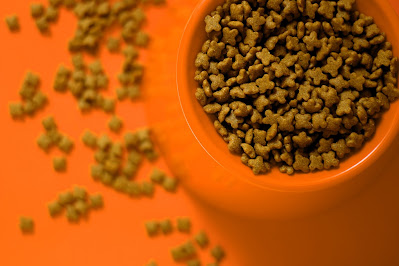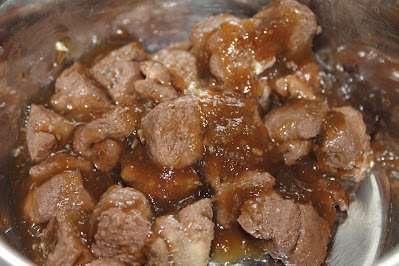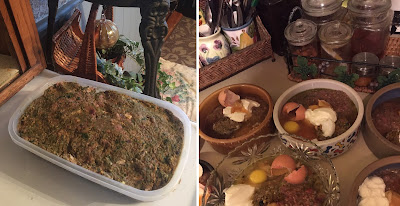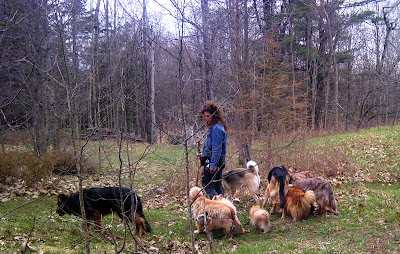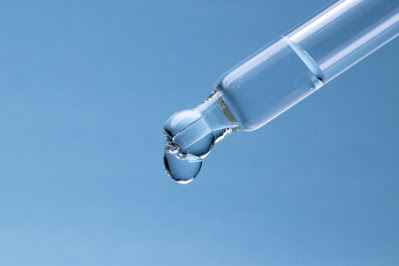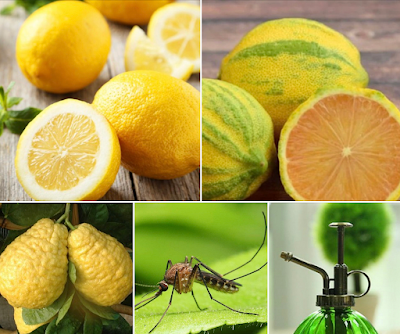This Can be a Serious and Life-Threatening Condition for Your Dog and Cat, Urinary and Renal Crystals and Stones, Causes, Symptoms, Species Appropriate Diet and Natural Treatment
A Guide to Bladder and Kidney Stones in Dogs and Cats
★ 19 min read
In this article:
- It's not an immediate emergency.
- You need to make an appointment ASAP.
- This is a life threatening emergency.
2.0 Signs Your Animal May Have Stones
- Noticeable symptoms of bladder stones.
- Noticeable symptoms of kidney stones.
- Symptoms that require testing to be 'seen'.
3.0 What Type of Stones Does My Dog or Cat Have, Bladder or Kidney?
- Bladder Stones and Crystals
- Kidney Stones and Crystals
4.0 Bladder and Kidney Stones and Crystals Type, Cause and Treatment
- Calcium Phosphate (Amorphous Phosphate)
- CaOx
- Silica
- Struvite
- Struvite, Sterile
- Mixed and Compound
- Uric Acid (Purine)
- Cystine
5.0 About PH Levels
- The pH Scale
- Normal pH Level for Dogs and Cats
- At Home Monitoring of pH Levels
6.0 What Type of Diet Is Best for My Dog and Cat?
- So Many Dogs and Cats Get Bladder and Kidney Stones, Why?
- Inappropriate Diets
- Appropriate Diets
7.0 Fluids for Treatment and Prevention of Bladder and Kidney Stones
8.0 Dietary Tips to Treat and Prevent Bladder and Kidney Stones
- Calcium Phosphate (Amorphous Phosphate) and CaOx Stones
- Struvite Stones
- Uric Acid (Purine) Stones
- Cystine Stones
1.0 When It's An Emergency, and Not
1. It's Not an Immediate EmergencyIf
your dog or cat has crystals or stones that are:
- Not completely blocking the uretha (your dog or cat is still able to urinate).
This is not an immediate emergency.
However, to ensure the condition does not advance further:
Action Required
- An appropriate dietary and natural medicinal protocol needs to be implemented as soon as possible.
2. You Need to Make an Appointment ASAP
If your dog or cat strains to urinate (no flow) and then passes a heavy flow of urine, your dog or cat may have just passed a stone.
If you can find the
stone, keep it and bring it to the veterinarian for analysis.
Whether you find the stone or not:
Action Required
- Call your veterinarian to schedule the earliest possible appointment, don't delay.
- If the diagnosis indicates, sediment, crystals or stones, an appropriate dietary and natural medicinal protocol needs to be implemented as soon as possible.
3. This IS A Life Threatening Emergency, Go NOW
If your dog or cat is not able to urinate at all, blockage is complete. This indicates that the urethra is completely plugged.
This is a life
threatening emergency.
Action Required
- Get your dog or cat to a veterinary clinic/hospital right away for emergency treatment.
- Once your dog or cat's situation has been stabilized and he's back home, an appropriate dietary and natural medicinal protocol needs to be implemented as soon as possible.
- Cause the urine to back-up into the urinary tract and cause kidney failure.
- Damage the bladder’s muscle tone thus creating incontinence.
- Stretch to the point of rupturing.
2.1 Noticeable Symptoms of Bladder Stones
Some dogs and cats will not exhibit outward signs. Others may exhibit one or more visible symptoms.
for example:
- Blood in the urine also called hematuria, caused by crystals inflaming the lining of the bladder.
- Cloudy or foul smelling urine.
- Urine smells like rotting eggs (can indicate cystien stones).
- Urine may be tinged red or burgundy in colour.
- Frequent urination.
- Straining to urinate, but often not passing any urine.
- Urinating in places that are not the normal place to urinate. Very noticeable in house-trained dogs.
- Pain when urinating,your dog to cry, yelp.
- Pain in the lower back or bladder area.
- Passing only a few drops of urine at a time.
- Puss in the urine.
- Straining to urinate, but often not passing any urine.
- Urinary tract infection.
for example:
- Increased thirst.
- Excessive licking of the genital area.
- Fever.
- Lethargy.
- Restlessness;
- Walking in crouched position.
for example, when
a stone plugs the ureters:
- Agitation.
- Severe pain and straining – this is an emergency, you need to get to a veterinary clinic right away.
- If blockage occurs depression, vomiting and uremia (kidney also known as renal failure).
2.2 Noticeable Symptoms of Kidney Stones
Kidney stones are less common than bladder stones.
Symptoms of Kidney Stones
for example:
- Sudden onset of whimpering, crying.
- Intermittent blood in the urine.
- If a stone plugs the ureters – agitation, severe pain and straining – this is an emergency, you need to get to a veterinary clinic right away.
- If blockage occurs depression, vomiting and uremia (kidney also known as renal failure result).
for example, when
a stone plugs the ureters:
- Agitation.
- Severe pain and straining – this is an emergency, you need to get to a veterinary clinic right away.
- If blockage occurs depression, vomiting and uremia (kidney also known as renal failure).
2.3 Symptoms That Require Testing to be ‘Seen’
3.0 What Type of Stones Does My Dog or Cat Have, Bladder or Kidney?
- Excessive calcium in the blood.
- Excessive calcium in the urine.
- Excessive oxalate in the urine.
3.0 What Type of Stones Does My Dog or Cat Have, Bladder or Kidney?
Bladder stones are also known as:
- Ureteral stones
- Ureteral calculi
- Urinary calculi
- Urinary stones
- Urolithiasis
- Struvite
Identification of Bladder Stones
There are many types of bladder stones and crystals. Identification of the exact type can only be done if your animal has passed the stone or had the stone surgically removed.
- Your dog's age, sex and breed.
- Abnormalities revealed by a urinalysis and blood test.
- Crystals observed in the urine.
- Presence of an infection.
- Urinary pH levels (normal range is: 6.0 to 6.5 up to 7.0 at the higher end of normal).
- X-rays and ultrasounds can be used to help determine location, shape and size of stones.
- An X-ray may show stones as a white circle.
- Some stones cannot be seen unless dye is injected into the bladder.
Types of Bladder Stones
- Calcium Phosphate
- also known as amorphous phosphate of apatite uroliths.
- Calcium Oxalate
- also known as CaOx.
- Cystine
- a sulferous stone casued by cystinuria.
- Silica
- Struvite
- magnesium ammonium phosphate stone.
- Mixed and Compound Urolith
- astone consisting of two or more minerals.
- Uric Acid (purine stone)
- ammonium acid urate or purine stone.
3.2 Kidney Stones and Crystals
Kidney
crystals and eventually kidney stones (also called nephroliths) typically form due to one or more of the following:
- A species inappropriate diet.
- Insufficient moisture intake.
- Genetic predisposition.
4.0 Bladder and Kidney Stone Type, Cause and Treatment
How do you...
- Prevent crystals from forming into stones?
- Dissolve existing stones that are not currently causing blockage?
- Prevent stones forming again in the future?
By...
- Naturally and holistically addressing the situation with a species appropriate diet and supplemental treatment plan tailored to the individual dog and cat's circumstances.
4.1 Calcium Phosphate Stones and Crystals (Amorphous Phosphate, Apatite Uroliths)
Causes
for example:
for example:
- Over-alakalized urine (pH greater than 7.0).
- Treatment for CaOx, cystine or urate stones requires the alkalization of the urine.
- This can trigger the formation of calcium phosphate stones.
- Conventional medications:
- Corticosteroids, prednisone, etc.
- Diuretic medications such as furosemide.
- NSAIDS
- Excessive calcium and phosphorus intake.
- Cushing's Disease
- Hypercalcemia (excess calcium in the blood).
- Hyperparathyroidism.
- Renal tubular acidosis (RTA).
Treatment
- The dog or cat needs to be transitioned to a species appropriate raw or gently cooked diet and supplemental plan tailored to the individual animal's circumstances.
- Dietary changes to support acidification of the urine.
- If the stone is not active (clinically inactive - not growing or causing problems), it may be left alone.
- If the root cause of stone formation is a disease condition such as Cushing’s disease, hypercalcemia or hyperparathyroidism, action should be taken to treat the root cause;
- Acidification of the urine.
- A species appropriate raw or gently cooked and fresh food diet tailored to suit the individual animal's circumstances.
- The diet needs to support the acidification of the urine.
4.2 Calcium Oxalate (CaOx) Stones and Crystals
About CaOx Stones
- Calcium oxalate crystals and stones occur in the upper urinary tract (the kidneys) and the lower urinary tract (the bladder).
- CaOx stones are one of the most common types of stones that occur in domestic dogs and cats.
- Most CaOx stones are found in the kidneys.
- Small breed male dogs are most affected by this type of stone.
- CaOx stones may be seen by x-ray.
- Species inappropriate diet.
- Insufficient daily exercise.
- Neutered.
- Overweight
- Is on conventional medications, for example:
- Corticosteroids
- Furosemide
- Cushing's Disease
- Hypercalcemia (excess calcium in the blood).
- Hyperparathyroidism.
- Bichon Frise
- Cairn Terrier
- Chihuahua
- Dachshund
- Keeshond
- Lhasa Apso
- Miniature and Toy Poodle
- Miniature and Standard Schnauzer
- Maltese
- Mixed breed
- Parson Russell Terriers
- Papillions
- Pomeranians
- Samoyeds
- Shih Tzus
- West Highland Terriers
- Yorkshire Terriers
- The dog or cat needs to be transitioned to a species appropriate raw or gently cooked diet and supplemental plan tailored to the individual animal's circumstances.
- Stones that are not growing or causing problems (clinically inactive), will resolve with proper natural treatment.
- For males with reoccurring stones, the issue can be resolved with a proper natural protocol.
- If
the root cause of stone formation is exacerbated by a disease condition such as
Cushing’s or Hypercalcemia, the
root cause should be addressed with natural treatment.
- A species appropriate raw or gently cooked and fresh food diet tailored to suit the individual animal's circumstances.
- The diet needs to be alkalized.
- The diet should be rich in low-oxalate foods.
- The diet should not be protein restrictive.
Cause
Silica stones form when there is too much silica in the diet. 95% of silica stones occur in males. Silica stones can form in dogs as young as 4 months of age, with the most common formation time being 6 to 9 years of age.
Silica stones form when there is too much silica in the diet. 95% of silica stones occur in males. Silica stones can form in dogs as young as 4 months of age, with the most common formation time being 6 to 9 years of age.
Urinary pH does not seem to have a causal effect on silica stone
formation.
Silica stones may be seen by x-ray.
Silica stones are linked to dogs with pica – an eating
disorder that causes dogs to eat dirt, rocks and other non-food related
items. The formation of silica stones is directly linked to consumption
of diets that are high in:
- Beans.
- Corn and corn derivatives.
- Grains and grain derivatives.
- Iodized salt.
- Soy bean and soy derivatives.
- Sugar cane, sugar beets.
- Starchy root vegetables - sweet potatoes, potatoes, yams.
- Starchy seeds.
- Vegetables – asparagus, bell peppers, cabbage, cucumbers, dark leaf greens (lettuce, spinach, dandelion, kale, etc.), green beans (yellow beans, red-runner beans, etc.).
- Fruit – apples, cherries, oranges and other citrus.
- Seeds – flax seeds.
- Diatomaceous earth (DE) or bentonite clay as an ingested treatment.
- German Shepherds
- Golden Retrievers
- Labrador Retrievers
- Old English Sheepdogs
- The
dog or cat needs to be transitioned to a species appropriate raw or gently cooked diet and supplemental plan tailored to the individual animal's circumstances.
- Stones that are not growing or causing problems (clinically inactive), will resolve with proper natural treatment.
- A species appropriate raw or gently cooked and fresh food diet tailored to suit the individual animal's circumstances.
4.4 Struvite Stones and Crystals
There are two types of struvite crystals and stones:
- Struvite
- acquired condition caused by inappropriate diet and personal care choices.
- Sterile struvite stones.
- genetic predisposition, furthered by inappropriate diet and personal care choices.
Cause
Struvite stones are compound or mixed stones with a mineral core surrounded by another mineral – ammonium phosphate, magnesium or phosphate.
Struvite stones are compound or mixed stones with a mineral core surrounded by another mineral – ammonium phosphate, magnesium or phosphate.
Struvite stones are also called triple phosphate and
magnesium ammonium phosphate stones.
When these three minerals are
present in high concentrations they can bind together into crystal
formations that irritate and cause inflammation of the bladder
wall.
- The crystals may also bind with mucus and form a plug that can block the urinary tract.
- The crystals may fuse with each other creating a stone.
- Struvite stones are porous, as such they provide a perfect host environment for bacteria.
- Struvite are one of the most common stones found in domestic dogs representing about 33% of all urinary tract stones, and about 50% of all urinary stones found in domestic cats.
- Bichon Frises
- Cocker Spaniels
- Lhasa Apsos
- Miniature Poodles
- Miniature Schnauzers
- Mixed breeds
- Shih Tzus
Cause
- A species inappropriate diet.
- Repeated use of corticosteroids.
- Retention of urine in the bladder beyond what is normal.
- The presence of urease which creates a high-pH and enables struvite stone formation.
- Other urinary tract problems.
- Struvite stones form when:
- A urinary tract infection (UTI) from bacteria that produces urease must be present or the stone will not form, and;
- When large amounts of ammonium phosphate, magnesium or phosphate crystals bond together in the presence of a UTI.
- Struvite crystals are very common in dogs and cats and only pose a problem when a UTI is also present.
- Struvite stones may be seen by x-ray.
Treatment
Diet- The dog or cat needs to be transitioned to a species appropriate raw or gently cooked diet and supplemental plan tailored to the individual animal's circumstances.
- A species appropriate raw or gently cooked and fresh food diet tailored to suit the individual animal's circumstances.
- The diet needs to support the acidification of the urine.
Cause
There is a genetic pre-disposition to the production of a natural protein called cauxin which the body produces and excretes in to the urine.
There is a genetic pre-disposition to the production of a natural protein called cauxin which the body produces and excretes in to the urine.
Cauxin in the urine can form crystals that do not require a bacterial
infection to form – this is why they are called ‘sterile’ stones.
Sterile struvite stones may be seen by x-ray and ultrasound.
Treatment
- The dog or cat needs to be transitioned to a species appropriate raw or gently cooked diet and supplemental plan tailored to the individual animal's circumstances.
Diet
- A species appropriate raw or gently cooked and fresh food diet tailored to suit the individual animal's circumstances.
- The diet needs to support the acidification of the urine.
Cause
Compound stones can develop when another type of stone is being treated. An inappropriate treatment can push the formation of another type of stone. For example, th orginal struvite stone end up with a CaOx shell around the struvite stone.
Compound stones can develop when another type of stone is being treated. An inappropriate treatment can push the formation of another type of stone. For example, th orginal struvite stone end up with a CaOx shell around the struvite stone.
- Mixed uroliths are comprised of two or more minerals in approximately equal proportions.
- This type of stone is rare, representing about 2% of uroliths.
- Compound uroliths are comprised of a core mineral surrounded by a smaller amount of a different mineral;
- This type of stone represents about 12% of uroliths.
- The majority of compound uroliths are found in female dogs simply because female anatomy creates a greater pre-disposition for urinary tract infections.
- Compound stones may be seen by x-ray.
- The dog or cat needs to be transitioned to a species appropriate raw or gently cooked diet and supplemental plan tailored to the individual animal's circumstances.
- A species appropriate raw or gently cooked and fresh food diet tailored to suit the individual animal's circumstances.
4.6 Uric Acid Stones and Crystals (Purine Stones)
Cause
This type of stone forms when the urine is persistently acidic. A diet that is rich in purines may increase uric acid in the urine. If uric acid becomes too concentrated it may settle and form a stone or may combine with calcium to form a stone.
Cause
This type of stone forms when the urine is persistently acidic. A diet that is rich in purines may increase uric acid in the urine. If uric acid becomes too concentrated it may settle and form a stone or may combine with calcium to form a stone.
Uric acid stones cannot be identified using x-rays. Ultrasound may be used to diagnose.
Breeds Most Prone to Uric Acid Stones (purine stones)
- Due to genetic metabolic abnormality:
- Dalmations
- English Bulldogs
- Large Munsterlanders
- Russian Black Terriers
- Due to protosystemic shunts (abnormal blood vessels that bypass the liver):
- Miniature Schnauzers
- Yorkshire Terriers
- The dog or cat needs to be transitioned to a species appropriate raw or gently cooked diet and supplemental plan tailored to the individual animal's circumstances.
- A species appropriate raw or gently cooked and fresh food diet tailored to suit the individual animal's circumstances.
- Lower intake of purine rich food. This does not mean lower protein intake.
Cause
- Cystinuria.
- An inherited metabolic disorder that impairs the ability of the kidneys to reabsorb cystine.
- Cystine is:
- An essential amino acid, that is normally produced by the body.
- Cystine protects the body from radiation, supports bone, connective tissue, hair, skin, brain and liver health.
- Cystine, homocysteine, methionine and taurine are four sulphur containing amino acids – only cystine and methionine are found in protein.
- Cystine present in the body eventually oxidizes into cystine.
- Methionine also breaks down into cystine.
- When cystine cannot be fully absorbed by the kidneys the excess cystine ends up in the urine.
- When excess cystine is able to be flushed out with the urine no negative impact ensures.
- If the cystine is not passed in the urine the concentration of cystine reaches a saturation level and then forms crystals that combine to form a cystine stone.
- The cystine stone may then block the kidney, bladder or urethra.
- Cystine stones form in acidic – low pH conditions.
- Cystine becomes significantly more soluble in liquid with an increased pH level.
- Cystine stones occur mostly in male dogs.
- Bulldog
- Bassett Hound
- Bull Mastiff
- Daschund
- Deer Hound
- English Bull Dog
- Irish Terrier
- Mastiff
- Newfoundland
- Staffordshire Bull Terrier
- Rottweiler
- Welsh Corgi
- Whippet
- The dog or cat needs to be transitioned to a species appropriate raw or gently cooked diet and supplemental plan tailored to the individual animal's circumstances.
- Urine must be alkaline rather than acidic.
- Sometimes, surgery (urethrostomy) may be required to redirect the path of urine.
Diet
- A species appropriate raw or gently cooked and fresh food diet tailored to suit the individual animal's circumstances.
5.1 The pH Scale
An Acidic pH
An acidic pH is:
a pH that is less than 7.0
A Neutral pH
A neutral pH is:
7.0 pH
An Alkaline pH
An alkaline pH is:
a pH that is greater than 7.0 pH
5.2 Normal pH Level for Dogs and Cats
A healthy dog or cat has a neutral to slightly acidic urinary and blood pH level.
Ranges in between 5.5 to 7.0 are considered normal.
Dogs and cats fed a species appropriate raw or gently cooked and fresh food diet typically have a pH between 6 and 6.5 – close to neutral.
The Vulnerable Dog or Cat
Dogs
and cats that are fed a dry food diet typically
have a pH level that is in the lower range of ‘normal’. Their pH level is
more acidic than it should be.
Parasites, inflammation and disease thrive in an acidic environment.
Dogs and cats with acidified pH levels
below normal are highly vulnerable to health issues, disease and parasite
infestations.
5.3 At-Home Monitoring of pH
If your dog or cat has urinary tract stones, it's a good idea to monitor pH level until the isues has been treated and resolved.
You can purchase a pH testing kit from a pharmacy.
To Ensure An Accurate Reading
6.0 What Type of Food is Best For My Dog or Cat?
- Do the pH test in the morning prior to feeding your dog or cat.
- Fresh urine must be used for the test;
- For dogs:
- Hold the pH strip in the urine stream, or collect a small amount of urine in a container. Then dip the pH strip into the container.
- For cats:
- You may need to devise a special litter box in order to catch some of the urine in a second container underneath the normal litter box.
6.0 What Type of Food is Best For My Dog or Cat?
6.1 So Many Dogs and Cats Get Bladder and Kidney Stones, Why?
Diet, diet diet.
The majority of dogs and cats experience bladder and kidney stones due to inappropriate diet.
A small percentage of dogs and cats:
- Have a genetic predisposition which can cause the formation of stones.
- Have a health condition such as Cushing's, which makes a dog more vulnerable to formation of stones.
A dog with Cushing's is at very low risk of experiencing stones if:
- Fed a species appropriate raw or gently cooked and fresh food.
- Naturally treated for Cushing's symptoms (not treated with corticosteroids and other conventional drugs).
6.2 Inappropriate Diets, Stone Forming Diets
6.2.1 Dry Pet Food Diets
All dry food diets are inappropriate. There is no exception.
This includes veterinary prescriptions diets. Veterinary prescription diets are among the worst products. They're formulated to mask one or several symptoms, not treat and remedy. They're formulated to cause a cascade of additional health issues over-time.
Standard ingredients in veterinary prescription dry (and wet) food diets include:
a partial list...
Condemned Denatured:
Meat, fat and derivatives sourced from dead, diseased, dying and disabled animals. Denatured with toxic denaturing agents.
- Learn more here.
Euthanized Dogs and Cats:
The bodies (meat, fat, etc.) of euthanized dogs and cats.
- Learn more here.
Starchy Carbohydrates:
Stone forming, disease causing.
- Learn more here.
Toxic Preservatives:
- Learn more here.
Other Toxic Food Additives, including:
Toxic salt
- Learn more here.
Toxic synthetic minerals
- Learn more here.
Toxic flavoring.
- Learn more here.
6.2.2 Wet Pet Food Diets
All wet food diets
- inappropriate, this includes veterinary prescriptions diets.
- issues with most wet foods are the same as dry foods, as noted above.
6.2.3 Air Dried, Freeze Dried, Dehydrated Pet Food
Most air dried, freeze dried and dehydrated pet food contains inappropriate components. For example:
- Starchy carbohydrates.
- Food additives.
A small number of products don't contain inappropriate components. Those products are fine for:
- Temporary use in an emergency.
- Not for daily-long-term use as the main diet.
6.2.4 Species INAPPROPRIATE Raw Diets and Cooked Diets
Many commercial and homemade raw diets or gently cooked diets are NOT species appropriate. These diets are stone forming.
An inappropriate raw or gently cooked diet includes components such as:
- grains, beans, starchy root vegetables.
- poorly sourced animal proteins, fats, bones.
- synthetic food additives.
6.2.5 AAFCO
Certified Pet Food
Lean more about AAFCO here.
AAFCO is a non-governmental organization consisting of animal feed lobbyists and
manufacturers.
AAFCO certification requires food products to contain a vast number of inappropriate food-additives.
AFFCO
permits toxic and carcinogenic food components in dog and cat food. For
examples see the list of items noted under 'Dry Food' further above.
6.3 Appropriate Diets
An appropriate diet for your dog or cat is...
6.3.1 Raw Food Diet
A raw food diet made with species appropriate food that has been tailored to suit your individual dog or cat's circumstances.
6.3.2 Gently Cooked and Fresh Food Diet
A gently cooked and fresh food diet made with species appropriate food that has been tailored to suit your individual dog or cat's circumstances.
A species appropriate raw diet is the best diet for your dog and cat.
Unless your dog or cat self-selects a species appropriate gently cooked and fresh food diet.
7.0 Fluids For Treatment and Prevention of Bladder and Kidney Stones
Fluids help your dog and cat's urinary and renal system flush-out debris, including crystal forming substances.
Offer a variety of appropriate fluids. This will encourage your animal to drink and provides opportunity for your animal to self-select fluids that best suit him.
7.1 Water
Dogs and cats with formed stones should be given distilled water.
Once the stones are dissolved and your dog or cat is on a raw or gently cooked diet tailored to their situation, distilled water should be replaced with filtered water or spring water.
7.2 Bone Broth or Short Cooked Broth
Bone Broth
- For the recipe
- Health benefits
- Serving guidelines
Go to this article.
Short Cooked Broth
- For the recipe
- Health benefits
- Serving guidelines
Go to this article.
7.3 Fresh Lemon Juice
Offer fresh lemon juice in a second water bowl beside your dog or cat's normal water bowl. If your dog or cat self-selects the lemon water you can also add some fresh lemon juice to their food.
Fresh lemon juice helps balance blood and urinary pH levels.
Fresh lemon juice (or fresh lemon pulp with juice) is more effective than potassium citrate for reducing urinary calcium levels and increasing urinary output.
Learn more about:
- Health benefits and use of fresh lemon
- Serving recommendations
Go to this article.
7.4 Tart Red Cherry Juice
Tart red cherries contain an antioxidant compound called anthocyanins. These compounds reduce inflammation and pain. Comparable to well known pain medications such as aspirin.
Learn more about tart red cherry:
- Health benefits
- Appropriate products
- Daily dosage for dogs and cats
Go to this article.
7.5 Cranberry Juice
You can offer your dog or cat cranberry juice.
Use pure, organic cranberry juice.
Cranberry helps prevent bacteria from attaching to the lining of the stomach and urinary tract.
Cranberries also contain the anti-inflammatory antioxidants.
If your dog or cat has Cystine stones don't use cranberry.
8.1 Tips for Calcium Phosphate (Amorphous Phosphate) Stones and
CaOx Stones and Crystals
Years ago it was thought that a diet of restricted protein and
phosphorous was key to reducing the risk of Calcium Phosphate stones and CaOx
stones. However this approach is outdated and, incorrect.
Further research showed that the former approach was wrong. Restricting dietary phosphorous increased calcium absorption thereby increasing the risk of stone formation.
Higher levels of protein reduced risk of kidney stones.
Research has proven dogs and cats that are prone to forming CaOx stones:
Blackberries, blueberries, clementines, mandarins, oranges.
Vegetables
Carrots, celery
Research has proven dogs and cats that are prone to forming CaOx stones:
- Should not be on a diet that restricts calcium, phosphorous or protein;
- Should not be on a diet that is high in carbohydrates;
- Should be on a diet that is high in good quality protein, fat, calcium, phosphorus, magnesium, and moisture/liquid.
8.1.2 Dietary Tips
Moderate oxalate foods can be included in moderate amounts.
Blackberries, blueberries, clementines, mandarins, oranges.
Vegetables
Carrots, celery
Low Oxalate foods can be included in unrestricted amounts.
examples:
- beef, bison, lamb.
- chicken, turkey, duck.
- mackerel, salmon, sardines.
- chicken, turkey, duck.
- mackerel, salmon, sardines.
- egg.
Dairy
Raw goat milk, kefir, yogurt.
Raw goat milk, kefir, yogurt.
Seeds
Coconut, flax seeds (ground), sunflower seeds.
Fruit
Apple, apricot, banana, cherries, cranberries, lemon, melons (all types), nectarine, papaya, passion fruit, peach, pear, pineapple, plum, raspberries, strawberries, Saskatoon berries, thimble berries.
Vegetables
Asparagus, broccoli and broccoli sprouts, Brussels sprouts, cabbage (and fresh sauerkraut), cauliflower, cucumber, lettuce – romaine, red leaf, green leaf, frizzy, radicchio; kelp, zucchini.
Coconut, flax seeds (ground), sunflower seeds.
Fruit
Apple, apricot, banana, cherries, cranberries, lemon, melons (all types), nectarine, papaya, passion fruit, peach, pear, pineapple, plum, raspberries, strawberries, Saskatoon berries, thimble berries.
Vegetables
Asparagus, broccoli and broccoli sprouts, Brussels sprouts, cabbage (and fresh sauerkraut), cauliflower, cucumber, lettuce – romaine, red leaf, green leaf, frizzy, radicchio; kelp, zucchini.
8.2 Tips for Struvite Stones and Crystals
8.2.1 Dietary Tips
Animal Proteins
examples:
- chicken, turkey.
- mackerel, salmon sardines.
- eggs.
Dairy
Raw goat milk, kefir, yogurt.
Blackberries, blueberries, cranberries, clementines, lemon, mandarins, oranges, mulberries, tart cherries. Also all of the fruit on this list with the exception of avocados.
Vegetables
All the vegetables on this list here with the exception of asparagus, broccoli and cauliflower.
Blackberries, blueberries, cranberries, clementines, lemon, mandarins, oranges, mulberries, tart cherries. Also all of the fruit on this list with the exception of avocados.
Vegetables
All the vegetables on this list here with the exception of asparagus, broccoli and cauliflower.
Fresh Sauerkraut
Recipe and serving recommendions:
- go here.
8.3 Tips for Uric Acid (Purine) Stones and Crystals
8.3.1 Dietary Tips
Animal Proteins
examples:
- chicken, turkey.
- mackerel, salmon sardines.
- eggs.
Dairy
Raw goat milk, kefir, yogurt.Fruit
Blackberries, blueberries, cranberries, clementines, lemon, mandarins, oranges, mulberries, tart cherries. Also all of the fruit on this list with the exception of avocados.
Vegetables
All the vegetables on this list here with the exception of asparagus, broccoli and cauliflower.
Blackberries, blueberries, cranberries, clementines, lemon, mandarins, oranges, mulberries, tart cherries. Also all of the fruit on this list with the exception of avocados.
Vegetables
All the vegetables on this list here with the exception of asparagus, broccoli and cauliflower.
Fresh Sauerkraut
Recipe and serving recommendations:
- go here.
8.4 Tips for Cystine Stones and Crystals
8.4.1 Dietary Tips
Animal Proteins
examples:
- beef, pork.
- chicken.
- sardines.
Fruit
Blackberries, blueberries, cranberries,
clementines, lemon, mandarins, oranges, mulberries, tart cherries. Also all
of the fruit on this list with the exception of avocados.
All the vegetables on this list here with the exception of asparagus, broccoli, Brussels sprouts and cauliflower.
All the vegetables on this list here with the exception of asparagus, broccoli, Brussels sprouts and cauliflower.
Winter Squash, pumpkin.
Holistic Diet, Nutrition, Wellness Services Tailored to Your Individual Dog and Cat
For information about my holistic diet, nutrition and wellness services, visit my holistic wellness services page.
Maintain good health | Address acute and chronic health issues | Pre and post surgery support and recovery
My holistic wellness services are available worldwide via video consultation.
🌎 USA | Canada | UK | Europe | Australia | New Zealand | Asia | South and Central America | Africa | UAE
📱FaceTime | Facebook | Skype | WhatsApp
To set-up your holistic wellness consultation get in-touch via email, go to my contact me page.
Holistic Behavioral Services for Your Dog
For information about my holistic behavioral services, visit my holistic behavioral services page.
For dogs of all ages, sizes and breeds.
My behavioral services are available worldwide via video consultation.
🌎 USA | Canada | UK | Europe | Australia | New Zealand | Asia | South and Central America | Africa | UAE
📱FaceTime | Facebook | Skype | WhatsApp
To set-up your holistic behavioral session get in-touch via email, go to my contact me page.
Affiliations to Companies
✓ None.
✓ I don't sell food, supplements, or other products.
✓ I'm not aligned with any companies.
Article and graphics by Karen Rosenfeld.





